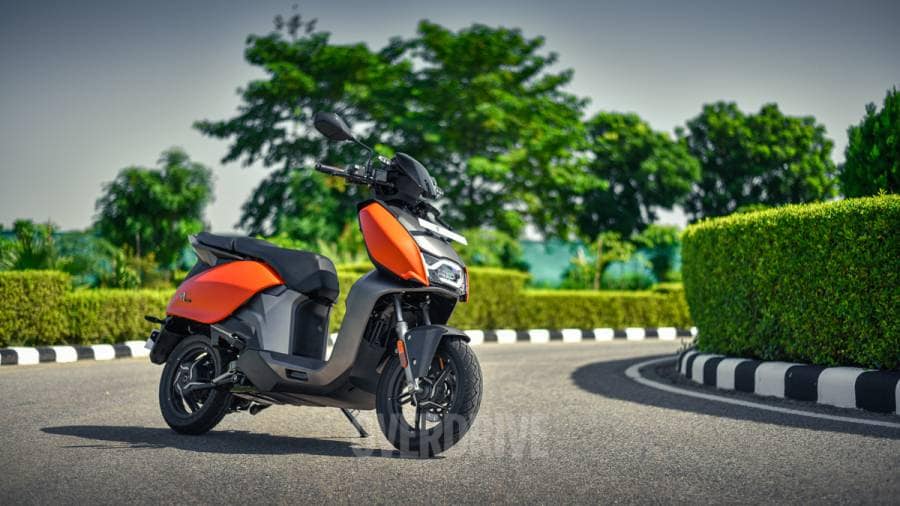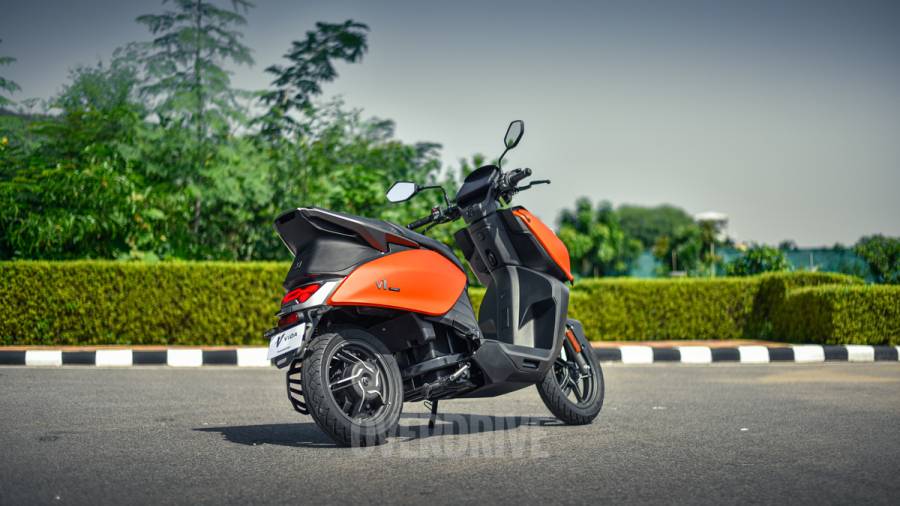Vida V1 review - Hero goes zero
Zero is the buzzword at Hero MotoCorp right now - from the plans of investing 60 million dollars in the US-based Zero Motorcycles, accumulating a 34% stake in Ather to now launching their first zero emissions product - the V1. It also kickstarts a new EV sub-brand called Vida. The word Vida translates to 'Life' in Spanish and this brand will have its own life separate showrooms, service centres and brand identity. All this will come next year, but for now, the V1 will be sold online or via experience centres that will start in Jaipur, Delhi and Bengaluru, while deliveries will begin in December 2022.

The V1 will be the first of many to come, says Vida, and is available in two variants - the Plus and the Pro - with 3.4 and 3.9kWh battery packs respectively, which is on par with the competition. Where it pips most of the competition though is with its claimed range - 143 and 165kms respectively for the Plus and Pro. We would still have to wait a while to road-test these and tell you their real-world range. But what I can tell you is that the Eco mode doesn't feel too sluggish like some of the rivals. It also has a boost function, which will give you a 30s boost in performance by automatically shifting to Sport mode when you close and wring the throttle open - so pulling overtakes or climbing inclines doesn't need you to shift modes or do much planning.

While the Eco mode tops out at 54kmph, the Ride and Sport modes stretch the top whack to 70kmph and 84kmph respectively, with slightly quicker acceleration too. The performance leads to a 10-15km drop in range, claims Hero. There is a Custom mode too which allows you to customise power delivery and regenerative braking, but I doubt if you will need to look outside of the three factory modes provided.
In case the batteries run out fully, you don't have to say alvida to the V1 and send it on a tow truck. Both batteries are removable for more versatile charging options. At 12 kilos each, these swappable or removable batteries aren't easy to lug around, but their removable form factor is good news when they run out of charge, or for those who don't have a secure parking space or have a challenge installing a 3-pin plug or wall charger in their parking spot. Hero is also working closely with Taiwan's Gogoro who excel at removable and swappable batteries and while these particular batteries haven't been developed with them, going forward Hero could look at replicating GoGoRo's model of battery swapping stations so you can simply swap a discharged battery with a fully charged one and carry on with your journey.
On a regular three-pin plug, these batteries will take around 6-7 hours to charge fully and both batteries can be charged simultaneously. While we couldn't test it, the Vida V1 can also run on a single battery if the need be. The Hero fast chargers claim that every minute of charging will give you 1.2kms of range - so a 10min charge while you go do your groceries should give you at least 10kms of range (in case you forgot to charge at home), but that is when there are enough compatible fast chargers in the vicinity. The good news is that the V1 will charge on the existing Ather grid too. The fast chargers will replenish 0-80% charge in around one hour - which too is on par with the competition.
The V1 is just as heavy as the Ola on paper but feels lighter to manoeuvre on feet or while riding in tight spaces. Those looking for lighter alternatives will continue to find the Ather or the iQube to be the more convenient options. the iQube is lighter on the pocket too and its low seating and slim dimensions feel friendlier than the V1, which feels like a large scooter from the saddle. The 780mm seat height is almost as tall as the Ather and Ola and can be a bit of a perch for shorter riders. Taller riders could find the riding geometry cumbersome - while the foot space is quite generous, the switchgear is likely to hit their knees. Sitting further behind on the seemingly long seat isn't a comfortable option because the split design can limit stretchability.
Speaking of the split seats, the rear seat and the adjoining panel can be completely removed for a single-seater form - either for design's sake or for installing mods like cargo carriers, luggage systems etc. If you leave everything in place though, the stock cargo space is 26l. My Arai RX7x couldn't fit in there, but smaller full-face helmets fit snugly. This cargo bin may not take a laptop, but it is generously sized for groceries, a small backpack or a large purse. It sits independently of the battery compartment, which also holds the charging equipment, so the cargo space isn't compromised per se.
I quite like the ingenuity of it, but all the peripheral plastics barring the coloured body panels, feel low-rent, while the switchgear feels flimsy. I hope these are shortcomings of the pre-production prototypes and that the V1s coming in December have better quality, fit and finish. While there is some hope there, the TFT instrumentation you see here is the final spec - and for a 2023 device the peak brightness is lacking in broad daylight and the touchscreen feels laggy. That said, the switchgear can control most of its vital functions and it's also the safer way should you need to use it on the move. On a related note, the riding modes can be changed on the fly too, but given how eager the sport mode is I would have liked Vida to necessitate a full closure of the throttle to allow riding mode changes. The V1 also comes with a Cruise Control that works as intended and there is also a park assist which can help reverse the scooter into a parking spot at up to 3kmph.
Though Hero owns a fat stake in Ather, there is no direct component sharing between the V1 and the 450 X (apart from the fast charging socket). The motor has a similar peak output though, of 6kW and 25Nm, but the continuous or sustainable output is higher at 3.9kW. Though it doesn't set new benchmarks in the specs department, it feels natural in the way it rides and climbing inclines even in the Eco mode doesn't feel like a task.
The V1 also feels breezy around winding roads. It's nimble and has sure-footed turn-ins with its 100-section MRF tyres. There is plenty of front-end feel too and a sense of robustness and stability in the way the V1 moves at speed - through the curves and on the straights. The braking mannerism from the Bybre hardware is confidence inspiring too and despite the strong regen in the Sport mode, the deceleration feels very natural in all the modes.
Unfortunately, we didn't get a chance to ride the scooter two up or on rough roads, so we will comment on that in our road test.
In case you don't like the V1 for whatever reason and feel like saying alvida to it within 18 months of ownership, Hero will give you up to 70% residual value or assured buyback value. Hero is even promising lower interest rates than most banks for easy financing and purchasing. They will also let you take the V1 home for a three-day long test ride and whether or not people intend to buy a V1, I see a lot of prospective EV customers opt for this offer only to gauge if they are ready to make the move to an electric scooter. So in that sense, Vida does something good for the segment as a whole and takes it forward too. The V1 will also be exported to global markets in both its avatars - the Plus and the Pro.
Sounds so much like the iPhone nomenclature - doesn't it? It's even priced as much as an iPhone - 1.45 lakh ex-showroom for the Plus and 1.59 lakh ex-showroom for the Pro. But unlike a phone, there will be road taxes and registration charges which will take the price to a little under two lakh rupees - which is on par with the likes of the Ather 450 X. While these pre-production V1s don't feel as well-finished as the Ather, it's a given that the Vida brand will command a premium for keywords and attributes that come with the Hero brand like reliability, service network, low cost of ownership and more importantly longevity. To me, the product seems very promising, but only time will tell if it will kickstart a new era of change, shut it, forget it.
